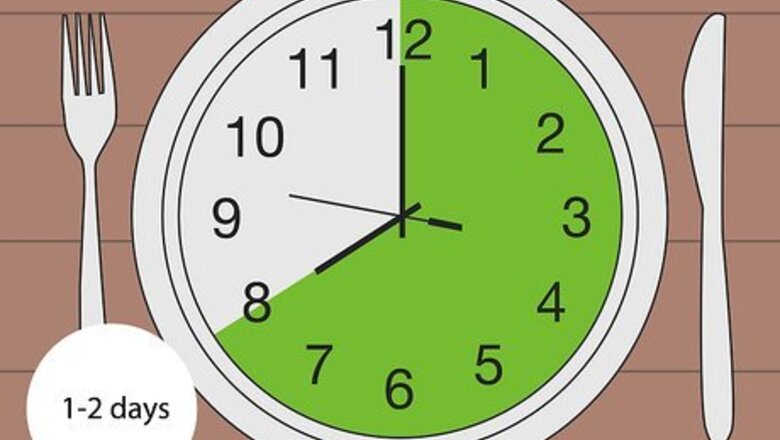
views
Trying a Time-Restricted Fasting Schedule
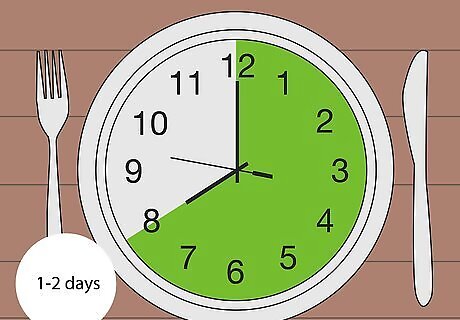
Start on a time-restricted schedule on 1 or more days. Time-restricted eating is a popular way to get started with fasting because it’s less extreme than other plans. It involves picking a window of a few hours each day to eat, and then fasting during the other hours. People usually find this to be the easiest plan to stick with, so it could be a good start for you. You don’t have to do time-restricted fasting every day. Start off with 1 or 2 days per week to get used to it. Then you can increase the number of days that you fast on. You could use time-restricted eating as an introduction to other fasting methods, or stick with it as your normal plan. It's up to you. Time-restricted fasting is also a good way to break habits like late-night eating, which can cause weight-gain.
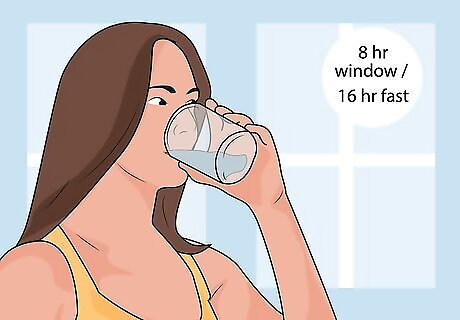
Try a 16:8 schedule to get started. This is a common fasting window that many people start with. On a 16:8 schedule, you can eat during an 8-hour window during the day and fast during the other 16 hours. Since you won't be fasting as long on this plan, it’s an easier schedule to get started with. A common timeframe for a 16:8 schedule is 11 AM to 7 PM, but the specific window is unique to each person. Try to time your fasting windows around when you’re most hungry. If you often wake up very hungry, then start your eating window earlier in the morning. An easy strategy for this schedule is waking up and skipping breakfast, then having lunch early.
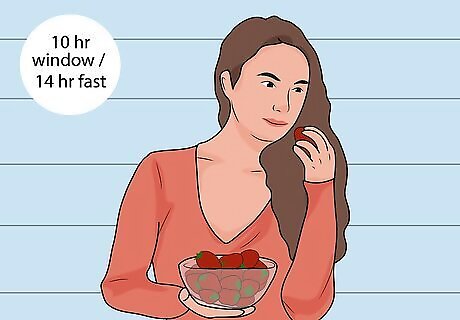
Change your window to 14:10 if you feel too hungry. If you're not used to fasting, then a 16:8 schedule might seem tough. In this case, you can dial it back to a 14:10 schedule instead. These 2 extra eating hours could make it easier to get through the early fasting period. You could try jumping back to a 16:8 schedule if you want to, or stick with a 14:10 instead. A popular schedule for a 14:10 schedule is eating between 10 AM and 8 PM and fasting for the rest of the day, but again, this depends on you.
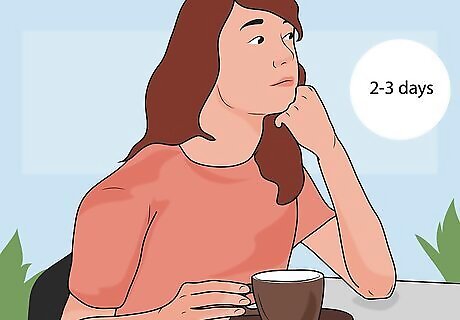
Fast on more days if you want to step up your fast. Since you're only limiting yourself for a few hours each day, you can do time-restricted fasting every day if you want to. Luckily, time-restricted fasting is easier to stick with when you get used to it. If you'd like to try a more intense intense fasting window, then try fasting multiple days per week or every day to see how you feel. You can try increasing the number of days that you fast on slowly. Jump up from 2 to 3, for example, before working up to every day.
Experimenting with Full-Day Fasting
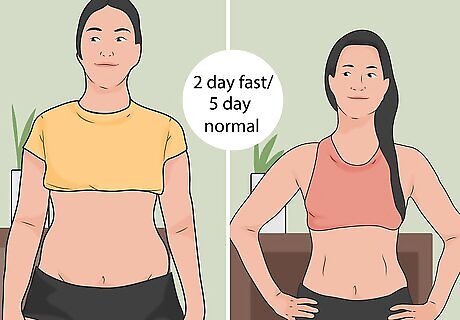
Try a 5:2 schedule to start with full-day fasting. Full-day fasting means you’ll fast for a full 24 hours straight. The easiest way to get started is with a 5:2 schedule. This means you can eat normally on 5 days during the week and fast on 2 of them. Pick this window if you want to step up your fasting. For example, you could fast on Monday and Thursday and eat normally on Sunday, Tuesday, Wednesday, Friday, and Saturday. You don’t have to increase your fasting schedule if you don’t want to, and many people stick with time-restricted fasting for a long time.
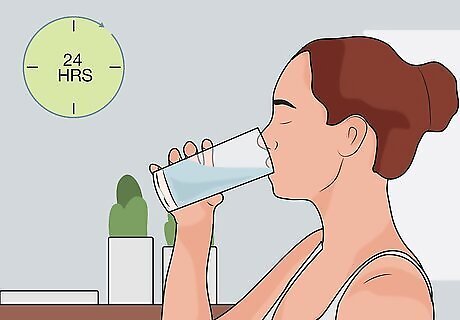
Try alternate-day fasting if your goal is to lose weight. This is the most intense fasting schedule, and it’s best for losing weight. On this plan, you’ll fast on alternating days and eat normally on every other day. Schedule 24-hour fasting windows every other day to stick with this plan. For an alternate-day fasting schedule, you would eat on Monday, Wednesday, Friday, and Sunday, and fast on Tuesday, Thursday, and Saturday. That time that you’ll break your fast varies on when you started. If you started fasting in the evening on Monday, then you can eat in the evening on Tuesday. Just make sure there is a full 24-hour window of fasting.
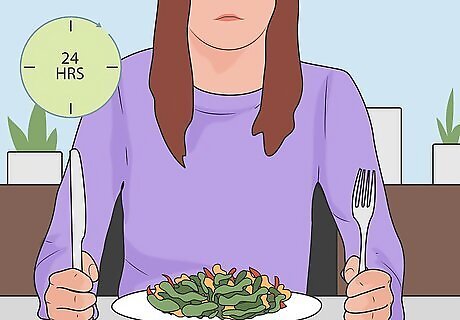
Leave at least 24 hours in between your fasting days. No matter what plan you use, never fast for multiple days in a row. This is dangerous and you could end up malnourished. Always schedule at least 24 hours between your fasting days to avoid any negative side effects. Fasting for multiple days in a row could actually sabotage your weight-loss goals. Your body might start storing fat instead of burning it to save energy.
Getting the Most from Your Fast

Ask your doctor before you start fasting. While intermittent fasting can have health benefits, there could still be health risks if you suddenly switch to a restricted diet. Always check with your doctor first to make sure this is safe for you, and follow any of their suggestions for fasting correctly. Your doctor may tell you not to try fasting if you’re pregnant or diabetic, have had an eating disorder in the past, take medications that require food, or are in an active growth period like adolescence. If your doctor tells you not to fast, then listen to them. Talk about other healthy dieting methods instead.
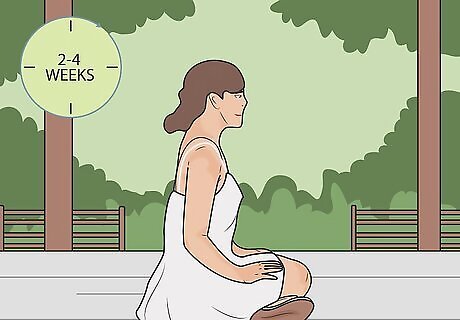
Stick with your fasting plan for 2-4 weeks to get used to it. Fasting takes some time to get used to, and you’ll probably feel a little cranky or fatigued when you get started. It takes about 2-4 weeks to really get used to it, and these side effects should get better after that time. Try to tough it out and stick with your fasting schedule for at least a month. Many people who make it this far continue successfully because they’ve gotten used to it. You'll probably also need some time to get used to new fasting windows. If you switch from time-restricted eating to full-day fasting, for example, you'll need a few days to get used to the new schedule.
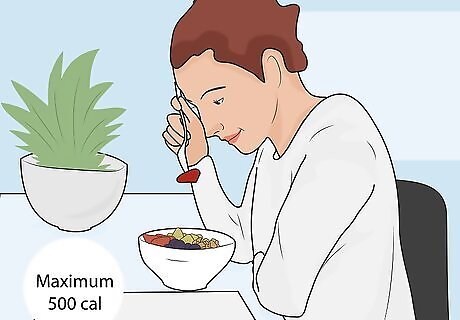
Eat a max of 500 calories on fasting days. Fasting actually doesn’t mean that you can’t eat at all. You can eat on days that you’re fasting, just not a lot. Stick with 1 or 2 small meals that total no more than 500 calories. This keeps your body in fat-burning mode. This only counts for alternate-day or 5:2 fasting plans. If you’re doing time-restricted fasting, then you can’t eat at all during the fast period.
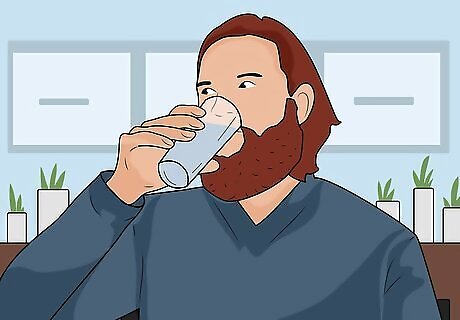
Drink plenty of fluids to stay hydrated. Getting enough fluids is extremely important while you’re fasting. Drinks without calories, like water, seltzer, black coffee, and tea, are allowed. Stick with these so you don’t add any calories during your fast, and drink as much as you need to so you don’t get dehydrated. Avoid juices, soda, and other drinks that contain sugar and calories. Remember not to add any milk or sugar to your coffee and tea. This adds calories to the drink.

Follow a healthy diet when you break your fast. Fasting on some days doesn’t mean you can eat anything you want on eating days. It’s still best to follow a healthy diet rich in fresh fruits, vegetables, whole grains, healthy fats, and lean proteins every day. Also stick with your usual number of calories, otherwise you could actually gain weight if you overdo it. Also avoid unhealthy foods like sugary, processed, fried, or fatty meals. Doctors usually recommend the Mediterranean diet as a guide for ideal health and weight-loss.
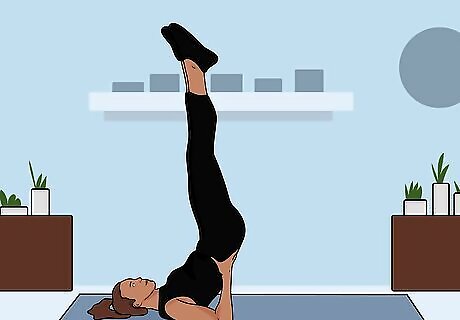
Exercise regularly to stay in good shape. Even if you’re fasting, you need to stay active to support your overall health. This is especially important if you’re trying to lose weight. Try to get some exercise every day, including on fasting days, to stay in good shape. If you’re exercising on a fast day, it’s best to do it near the end of the fast. This burns the most fat and prepares your muscles to absorb nutrients when you eat. Stick with less intense activities on fasting days. You won’t have as much energy, so you could hurt yourself if you push too hard.














Comments
0 comment